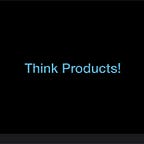How to land your first Product Management Gig?
If you have a penchant for Problem Solving and an entrepreneurial mindset, Product Management is a great place to start. You get to learn about building new features and their impact on your customers; you also get to work very closely with investors, sponsors and business stakeholders- so you get a front row view of the business end of things.
Product Management, in general, is a very vast field. Therefore, it can get intimidating for people who are looking at it from the outside, but I think there’s a very crisp way to build a portfolio that will make you stand out.
There are potentially two ways of going about building street cred if you don’t have experience and if people are not willing to offer you a job in the field because you don’t have prior experience.
One of those ways is, is to work for free for someone else which I would not suggest.
The other way--and my recommendation- would be to start by creating a portfolio of products that are close to your heart and documenting your journey.
You don’t have to be too technical to be able to do this; neither do you have to spend a lot of money on tools.
Let me break this down for you:
Ideate: The first step is to ideate and do it well. A basic principle of product management is value maximization and one way to maximize value is to build something that users will pay for. The best way to figure out what the users will pay for is to observe them, observe the competition and figure out the gaps. Figure out what we call JTBDs in the product management parlance, also known as “jobs to be done”. This helps you scope out some Problems that are worth solving for.
Roadmap: The next step is to start prioritizing these into a product roadmap.
Now there are different types of roadmaps — two of the most common ones being “Now Next Later” and “Goals Oriented” roadmaps. The goals oriented roadmap is a little more complex compared to the NNL. If you’re new to product management, I’d suggest that you build a Now Next Later roadmap with the most valuable problems being the first ones you would solve.
This would also be your MVP.
I will get into details of what MVPs are, and how do you build these Minimum Viable Products without spending a lot of money in future sessions.
Wireframing: Wireframe your MVP. It gives you an idea of the flaws that you might have in terms of user interface. I suggest that you socialize it with a few friends who may fall into the pool of customers that you’re targeting.
Don’t be afraid to socialize your ideas with others. People may or may not steal your ideas but if you don’t socialize them, you might end up spending a lot of time and money into building something that will not be accepted by users.
Prototyping: Once you’re done with the wireframing, it’s time to get a bit more professional with your designs and build a prototype. You don’t need any technical knowledge to start building prototypes and there are a lot of good tools out there- Adobe XD, Figma and Invision being few of these. Most of these tools have free trial versions or student versions or academic versions. These are hosted you don’t need to buy any expensive equipment. A Windows laptop or a Mac Book would do.
Publish your portfolio: After having built a portfolio; it really becomes easy to anchor the conversation around product management with potential recruiters. It also means that you are not afraid to put yourself out there and are serious about a career in Product Management.
By this time, you would have a lot of work to show for yourself, and most hiring managers would prefer hiring someone who has a live portfolio with zero years of corporate product management experience versus someone who has decades of corporate product management experience but doesn’t have a product to show for that experience.
